Eliminating Plastic Ties
- May 17, 2023
We are always trying to find ways to reduce our carbon footprint and create less waste. In reducing one’s own carbon footprint sometimes that means we need to relinquish some of the comforts and conveniences that modern day has given us. And sometimes that means we need to change old habits, which can be hard.
Our most recent effort in the vineyard to reduce our carbon footprint was to eliminate the use of plastic ties.
We tie vines to establish the exposure of the fruit to the elements. There are three places that we would put a tie on a vine:
1. On young vines. They require a tie around their trunks until they are well established (about 15 years old).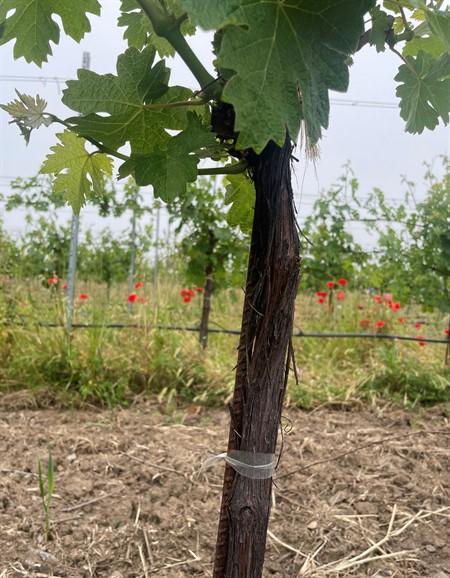 2. On spur pruned vines. We tie the cordon to the trellis so it is secure. About 30% ranch is cordon pruned.
2. On spur pruned vines. We tie the cordon to the trellis so it is secure. About 30% ranch is cordon pruned.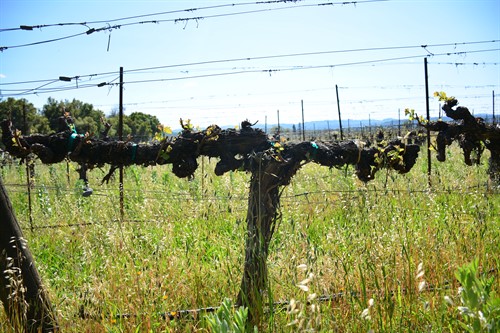 3. On cane pruned vines. The ties are used to attach canes to the trellis. The remaining 70% of the ranch is cane pruned.
3. On cane pruned vines. The ties are used to attach canes to the trellis. The remaining 70% of the ranch is cane pruned.
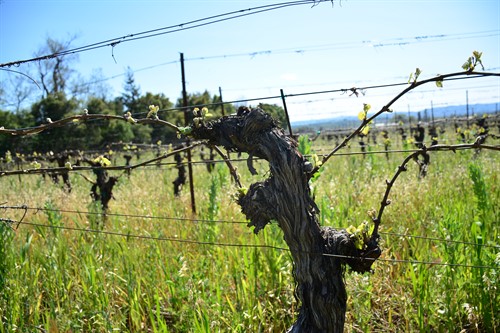 Trunk and cordon ties need a new tie every five years, but cane pruned vines need a new tie annually (with between one and four ties per vine).
Trunk and cordon ties need a new tie every five years, but cane pruned vines need a new tie annually (with between one and four ties per vine).
For the cane pruned vines, we have three tying machines from Pellenc which use a roll of thin wire covered in a biodegradable medium (like a twist tie). 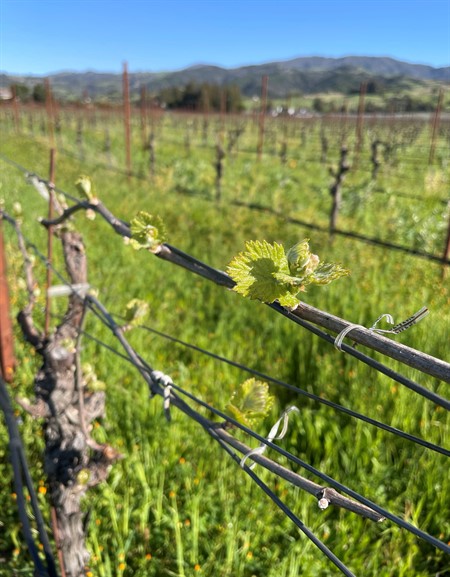 They are designed to allow you to quickly install a tie on a cane of ½” diameter or less. For a variety of reasons, we have been moving away from cordon pruned to cane pruned, so these machines are great because they are designed to help tie cane pruned vines very fast.
They are designed to allow you to quickly install a tie on a cane of ½” diameter or less. For a variety of reasons, we have been moving away from cordon pruned to cane pruned, so these machines are great because they are designed to help tie cane pruned vines very fast. 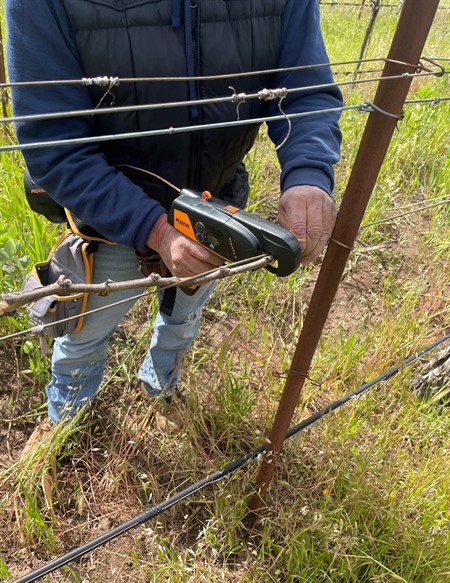
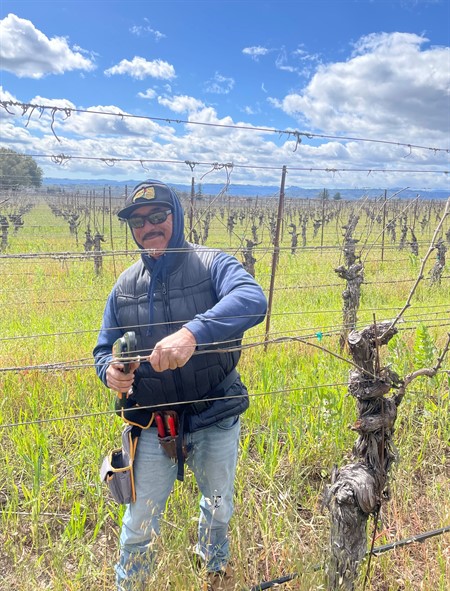
In the past, we used plastic material to tie the trunks and canes. The advantages of the plastic ties are:
- The vineyard team can carry a lot of tying material easily (which is important on a big ranch like this of 96 acres)
- Its durability allows it to last a long time (which is actually the problem with it)
- It is gentle on the guys’ hands (tying 1000 knots per day!)
- It is relatively expensive.
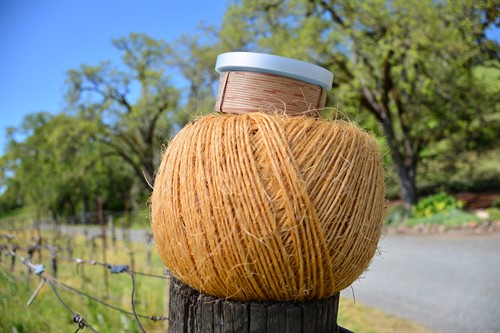 Top to bottom: plastic material, biodegradable twist ties for Pellenc machine, twine
Top to bottom: plastic material, biodegradable twist ties for Pellenc machine, twine
We all were concerned about the plastic use and wanted to find alternatives, so we started using twine this year. It solves the problem of plastic waste; however, it presents other challenges.
- It is a bit harder to deal with in the field as the ball of twine is cumbersome. (See photo above.) The team came up with creative solutions of how to carry it – kid’s old school backpack, repurposed seed bag or a cross body bag.
- Working with the material all day, tying about 1,000 knots, is hard on your fingers with the friction of pulling twine.
- There is a real concern about the longevity of the twine. It certainly won’t last the minimum of five years like the plastic does, which means there will be more work to be done. But now, as we’ve moved towards more cane pruned than cordon, that issue of longevity is not as relevant.
We were surprised to learn that it takes about the same time to tie a knot with the twine as it does with the plastic.
I think we overcame the challenges of the twine. It feels good knowing that we aren’t using all the plastic we had been. We never loved it, but it seemed like the best solution. Often in looking for solutions to reduce our carbon footprint, we discover new things – new ways to do something, new materials, new philosophies. Sometimes that pushes us outside our comfort zone, but if we are open to exploring new options and being flexible, we realize that we can change and adapt for the better. At the end of the day, we want to know that we are doing all we can preserve the environment and do the right thing.



